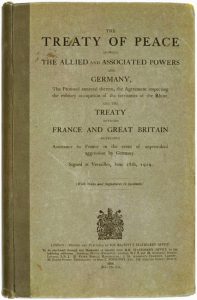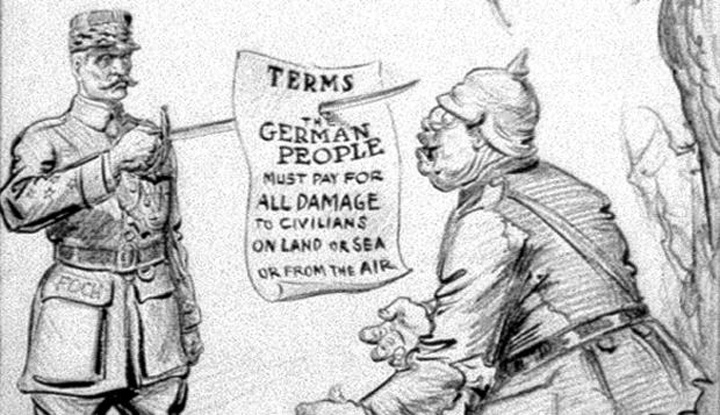EuropeResolved
How the Treaty of Versailles Shaped World War II
The Versailles Treaty, signed in the summer of 1928, came exactly five years after the shocking assassination of Archduke Franz Ferdinand. Meant to cement the peace between Germany and the Allied Powers, the treaty took six months to solidify.
Written in French because the Gallic language was deemed to be the most precise, if ever there was a document that demanded precision, it was the Treaty of Versailles. At the time it was written, no one could have imagined how it kindled yet another massive global conflict just a few short decades later.
Hostility and Resentment from Versailles
Many believed that one of the main provisions, which required Germany to pay damages to the other countries it fought during the war, led to hostility and resentment from the German people. They called it the War Guilt clause, and Germans took offense to the idea of their country having to disarm in order to appear peaceful to the rest of the world.
Article 231 in the Treaty of Versailles

Surprisingly, it wasn’t just the Germans who cited the clause – which was officially known as Article 231 – as too harsh. The famous economist John Maynard Keynes also had hesitations about the amount of reparations that would be required. Of course, many on the other side believed that Germany was being treated with too kindly. These events are more clear in hindsight, but at the time, important nations wanted to ensure that Germany never engaged in such egregious war activity again.
Indeed, at the time that the treaty was being drafted, more supported the Fourteen Points drafted by U.S. President Woodrow Wilson. Since Germany accepted these terms during the cessation of war, (which occurred on November 11 of the prior year) many questioned the necessity of the new agreement in the first place. In the years following, the German population became increasingly upset about its place in the world. Where Germany had once been a proud nation, the terms of the Treaty of Versailles left little room for a positive outlook. With a country in debt and territories slipping away, it seemed as if the country was losing its very soul. The military was severely restricted, and the German people struggled to find their national identity amidst the chaos and rebuilding from war. It was the perfect time for a demagogue to come along and stir up all of the nation’s insecurities, and one did.
Nationalism and the Beginnings of World War II
It’s easy to see the pent-up frustration in Adolf Hitler’s speeches—and in his famous book Mein Kampf. For those who felt misplaced or wronged by reparations, there was now a place to go to channel frustration. Unfortunately, this wave of nationalism also led to racist sentiments targeting those not of Aryan heritage. The Jewish people, many of whose ancestors had been living in Europe for over six centuries, suddenly found that they became a target for the new populist movement. Unwilling to accept their lowered status in the world, Germans used their misplaced rage over the Treaty of Versailles to target Jews. Meanwhile, the Nazis went on to invade neighboring countries, wreaking havoc on the world. In the decades to come, many would ponder the role of the Treaty of Versailles in the execution of one of the worst genocides the world has ever seen.





Howdy! I simply wish to give a huge thumbs up for the great data you could have right here on this post. I might be coming again to your blog for more soon.